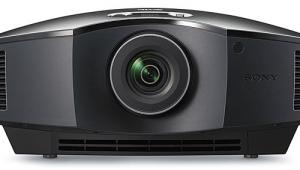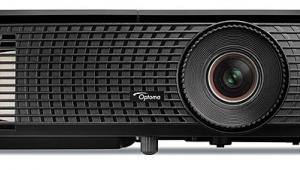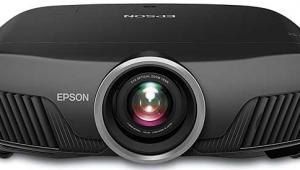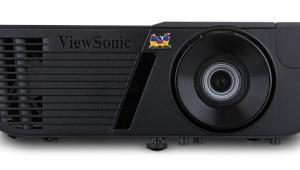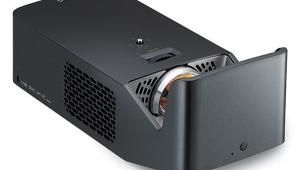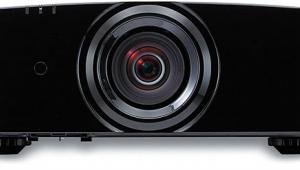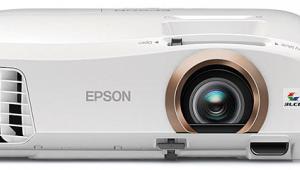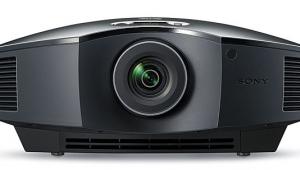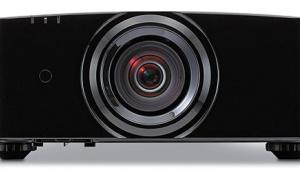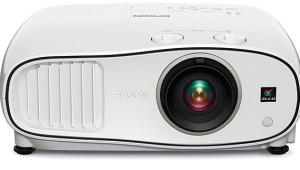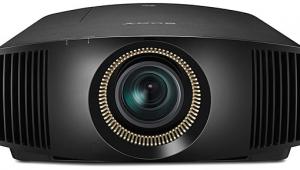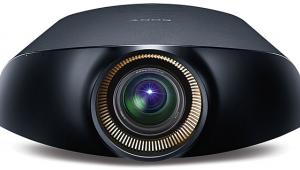Sony VPL-VW1000ES 4K SXRD Projector Page 3
It isn’t really possible to accurately say how much benefit you get from the VPL-VW1000ES’ upconversion of 1920 x 1080 sources to 4K. The only definitive way to judge this would be if the projector offered a true 1:1 aspect ratio mode—a true passthrough. In that case, standard HD would only occupy 25 percent of the screen at its center, surrounded by black on all sides from the 75 percent of the pixels that remain unused. Assuming sufficient zoom range (probably not a likely assumption), you could then zoom that image up to fill the screen, save it in a lens memory, and toggle back and forth. But the VPL-VW1000ES has no such passthrough mode, so this procedure was not possible.
Viewed from close up—that is, a foot or so from the screen—I could spot some lighter-gray, almost ghost-like pixels. This was possibly a result of the upconversion—not artifacts per se, but deliberate fill to smooth out the image as the Sony processes it to fit into the 4K matrix. These pixels blended into the overall image at any comfortable viewing distance.
You can’t expect SD sources to hold up as well when enlarged to almost 10 feet wide. They didn’t, but if I sat a bit further back, a well-produced SD DVD could be surprisingly effective. Charlotte Ray, one of the most beautifully photographed movies of the past decade and one of my reference standards for picture quality before Blu-ray, was still satisfying—good news if you have an extensive DVD collection you don’t want to replace. Nevertheless, spending $25,000 on a projector, plus a screen, to watch mostly DVDs and other standard-definition material would be peculiar indeed. The VPL-VW1000ES deserves the best source material you can give it.
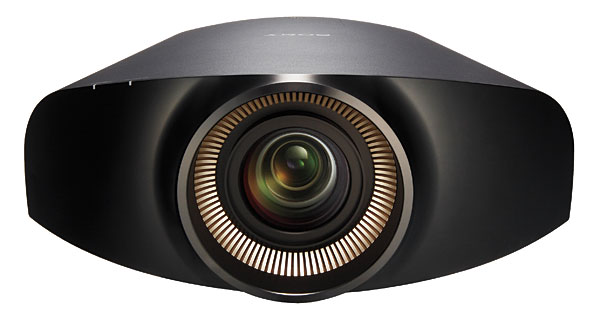
The Sony’s blacks were respectable in its fixed iris settings but exceptional in the Auto Full dynamic mode. Some viewers dislike irises and consider them kludges at best. But video (and film) technology is full of kludges designed around the limitations of human vision. Yes, there were a few times I could see the iris operate, but these almost never occurred in the midst of a film or other real-world program material. If you jump suddenly from a black field test pattern to a brighter pattern, the latter will fade in over a fraction of a second rather than pop up instantly. But such abrupt brightness changes are rare in movies. Fade-ins and fade-outs are the general rule when transitioning from a dark scene to a bright one and back. In these situations, the operation of the iris was almost always visually undetectable.
You might notice when you call up the menu in a dark scene, the menu is dim, whereas on a brighter scene, it’s brighter. And the brightness of end credits can sometimes vary slowly as the amount of white lettering on the black background changes. But if you’re only vaguely aware of such subtle dynamic iris issues for a few seconds during a two-hour movie but get the benefit of better blacks for the entire film, where’s the beef? As I’ve noted before, no one does dynamic irises better than Sony.
In my early viewing, I sat about 10 feet from the screen, which is about 1.8 picture heights. (See the sidebar: “So Near and Yet So Far: How Close Should I Sit?”). That proved to be a bit too close for comfort, though extremely revealing. I ultimately settled on a distance of 13 to 14 feet from the screen as optimum—for me. From there, the results were more than just impressive. Images were crisp and sharply detailed.
And the best HD sources looked amazing. The visuals in Avatar were standouts. Some of the opening shots looked a bit too soft—such as the close-ups of Jake as he watches his brother’s cremation. But that was clearly a focus issue in the source; later close-ups in the film were pin sharp. And the black level and shadow detail could hardly have been better, including both the richness of the star field behind the ship as it approaches Pandora and the dark but clearly resolved night scenes when Jake is stranded in the forest.
The Chronicles of Narnia: The Voyage of the Dawn Treader isn’t quite as visually impressive as Avatar, but it was nevertheless captivating. The dragon’s scales, Lucy’s freckles, and Aslan’s fur blowing in the wind were all vividly reproduced. While the question remains as yet unanswered as to whether the 4K upconversion is superior to what an unprocessed 1080p image would look like on this screen, what I saw from well-produced HD source material was compelling.
2D Performance, 4K Sources
Sony provided us with a limited selection of server-based, true 4K material. The best of it included a trailer from next summer’s The Amazing Spider-Man and The Arrival—the latter a short, in-house documentary produced as a promotion for Sony’s new 4K pro digital camera. Both of these selections had a few issues regarding dynamic range and gamma—issues that likely originated not in the projector, which had proved its mettle in these respects with the upconverted HD material, but rather somewhere in the processing of the images as they made their way from the original source to the server.
Nevertheless, resolution is the main item of interest here, and the most obvious benefit I saw in the provided 4K material was how well it combined natural smoothness and detail—two qualities that are often seen as incompatible. Enhanced detail is usually what grabs our eyes first, and in that respect, the Sony certainly promises to deliver the right 4K stuff.
I did notice that 4K appeared to be fussier than standard HD about both the quality and length of the source-to-display HDMI cable. If you use an up-to-date, high-speed HDMI 1.4a cable compliant with 4K, you should be fine.
Conclusions
With sub-$10,000 projectors offering the sort of performance they do today, the high-end home theater market is reaching for new worlds to conquer. 4K projection appears to be the obvious answer, and the Sony VPL-VW1000ES delivers the goods—at least in 2D. As for 3D, stay tuned.
While the VPL-VW1000ES can upconvert today’s HD sources to 4K, there remains the matter of the true 4K program material needed to take maximum advantage of the projector’s capabilities. Although Hollywood has digitally released more than 70 movies in 4K theatrically to date, significant 4K video material doesn’t currently exist in the consumer video world, nor is any imminent. But Sony is the only consumer electronics manufacturer that owns a major motion picture studio with an extensive catalog of new and older titles. You can be certain that it’s taking the issue of consumer 4K source material seriously. The matter is being looked into by Top Men. Pardon the familiar Raiders of the Lost Ark reference, but this time I suspect the results of their work won’t end up in an obscure warehouse in the desert.
